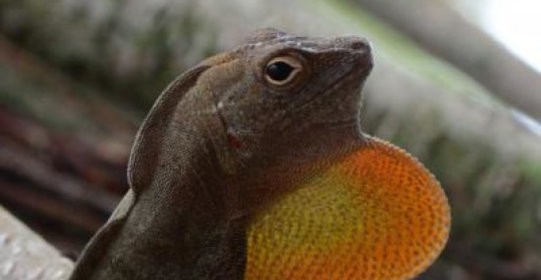New framework sheds light on how, not if, climate change affects cold-blooded animals

Cold-blooded animals like lizards, insects and fish have a preferred body temperature range at which they hunt, eat, move quickly and reproduce. Fear that a warming climate will constrict this temperature range underlies recent studies that warn of the detrimental effects of climate change on the activity and survival of cold-blooded animals. While not contradicting these warnings, a new paper published in the latest issue of Ecology Letters offers a revised framework that may better answer how activity is affected by temperature.
“We’ve done very well at saying climate change will have an impact on ectotherms, but we’ve done less well at saying how they will be effected,” said Manuel Leal, an associate professor of biological sciences at the University of Missouri and one of the paper’s authors.
The researchers argue that most studies that look at the effects of climate change on cold-blooded animals, or ectotherms (animals whose body temperature depends on environmental temperature), treat optimal body temperature as the primary or only driver of activity. The approach, they say, fails to render the complexities of these animals’ behaviors.
“While preferred body temperature is a good index of when most behaviors are affected by temperature, it is not a good representation of the biology of the animals because they are actually active cooler and warmer than their preferred temperature,” said Leal.
To get a better idea of how temperature affects behaviors, the scientists propose a conceptual framework in which four components of temperature-dependent activity (thresholds, probabilities, modes and vigor) are integrated to predict activity windows at the scale at which organisms experience and respond to ambient temperature.
“The strength of this framework is its simplicity and organism-centered approach,” said Leal. “Emphasis is placed on the importance of looking at the synergy that happens among ambient temperature, body temperature and activity.”
The authors apply their framework to investigate the consequences of climate warming on Anolis cristatellus, a tree-dwelling lizard found in both dry and wet habitats on the island of Puerto Rico. The results demonstrate that behaviors, such as eating and mating, are extremely sensitive to thermal change, especially compared to sprinting speed, a physiological trait used by most studies to measure climate change effects.
“For example, our analyses show that the physiological performance of A. cristatellus in dry habitats will decrease by about 25% under future warming, but that their activity budgets will decrease by 50%. Furthermore, the habitat will become much less suitable for reproductive behaviors, which are of course critically important for populations to avoid extinction.”
Leal said the revised conceptual framework, along with a greater emphasis on collecting observational data in the field, will both help to better predict and mitigate the effects of climate change on these vulnerable animals.
“While laboratory studies of the effect of temperature on the physiology and behavior have provided significant insights into thermal ecology of ectotherms, the time is ripe to take this knowledge outside the lab to further develop climate change models,” he said.
Source: University of Missouri-Columbia

 Print
Print